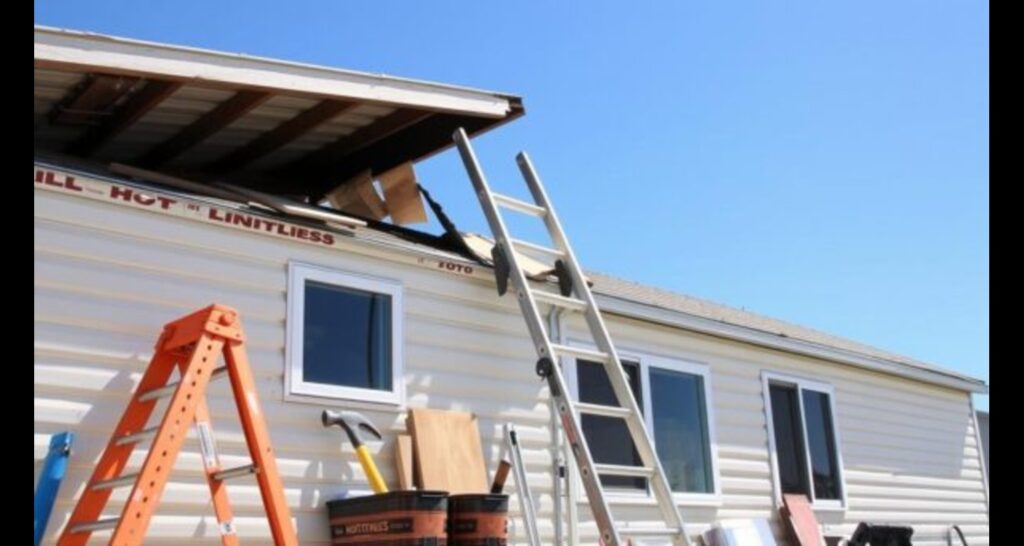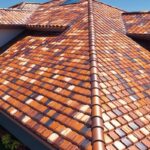Is your mobile home’s roof showing signs of wear and tear? Are you wondering if it’s time for a repair or complete replacement? Tackling a mobile home roofing project might seem daunting. But with the right knowledge and tools, it can be a manageable DIY task. This guide will walk you through the essentials of mobile home roof repair and replacement.
Mobile homes come with unique roofing challenges. Whether you’re dealing with an older model’s flat roof or a newer home’s pitched design, understanding your options is crucial. We’ll cover everything you need to know about DIY roof repair for your mobile home.
Table of Contents
Key Takeaways
- Mobile home roof replacement costs typically range from $1,500 to $3,500 for DIY projects
- Different roofing materials offer varying lifespans and benefits
- Regular maintenance can significantly extend your roof’s lifespan
- Proper assessment is crucial before deciding between repair and replacement
- DIY repairs can lead to substantial cost savings compared to professional services
Understanding Mobile Home Roof Types
Mobile home roofs come in different types, depending on when they were built and their design. Knowing what kind of roof you have is key for keeping it in good shape. Let’s look at the main types of mobile home roofs and what makes them special.
Flat and Bowed Roofs
Older mobile homes, built before 1976, often have flat roofs. These roofs are almost level and might be covered in sheet metal or asphalt. Bowed roofs, on the other hand, have a slight curve. This helps water run off better than flat roofs.
TPO (Thermoplastic Olefin) membranes are great for both flat and bowed roofs. They’re durable and help save energy.
Pitched and Peaked Roofs
Mobile homes built after 1976 usually have pitched or peaked roofs. These roofs are steeper, which helps water flow off and makes them look good. Asphalt shingles and metal panels are common choices for these roofs.
Shingle roofs for single-wide homes cost about $1,500. Double-wide homes can cost between $2,500 and $3,000.
Double-Wide Roof Structures
Double-wide roofs are made of half trusses that fit together to form a complete truss. This design makes them easier to move and set up. You can choose from metal, shingles, or rubber membranes for these roofs.
The cost depends on the material you pick. Rubber roofing for a double-wide home can cost between $1,595 and $3,610.
| Roof Type | Common Materials | Average Lifespan |
|---|---|---|
| Flat/Bowed | TPO, Rubber | 10-20 years |
| Pitched/Peaked | Asphalt Shingles, Metal | 15-60 years |
| Double-Wide | Metal, Shingles, Rubber | Varies by material |
Knowing about mobile home roof types helps homeowners make better choices for upkeep, repairs, and upgrades. Each type has its own benefits and things to consider. These choices affect how your home looks and works.
Signs Your Mobile Home Roof Needs Attention
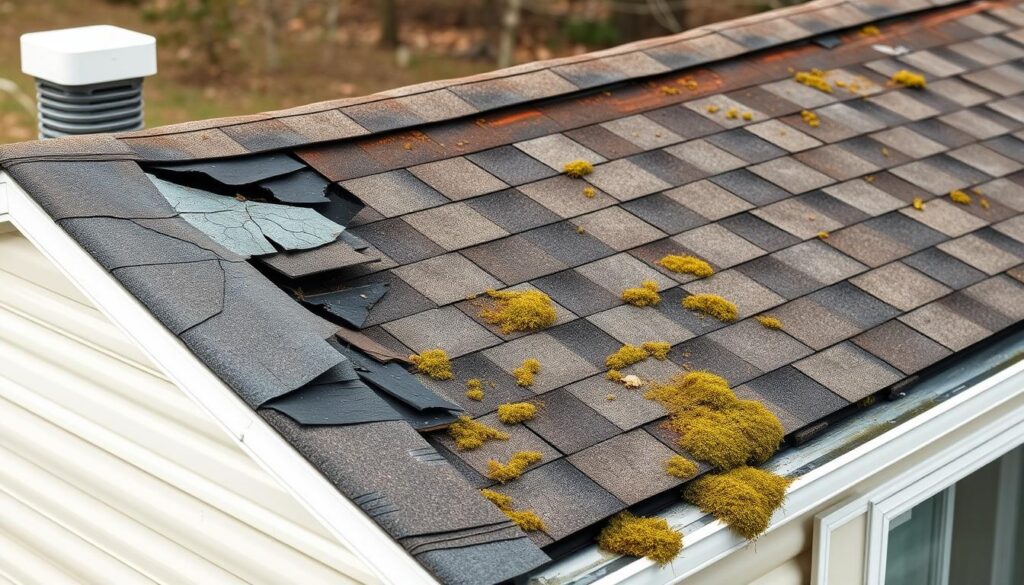
Spotting roof damage early can save you money. Regular checks help find problems before they get worse. Here are common signs your mobile home roof needs care.
Visible leaks are a clear sign of trouble. Look for water stains, dripping water, and sagging ceilings. Mold or mildew growth also means there’s hidden moisture.
Wear and tear on the outside is another warning. Missing or damaged shingles, gaps, and curling or buckling are signs of damage. For metal roofs, watch for rust or loose panels.
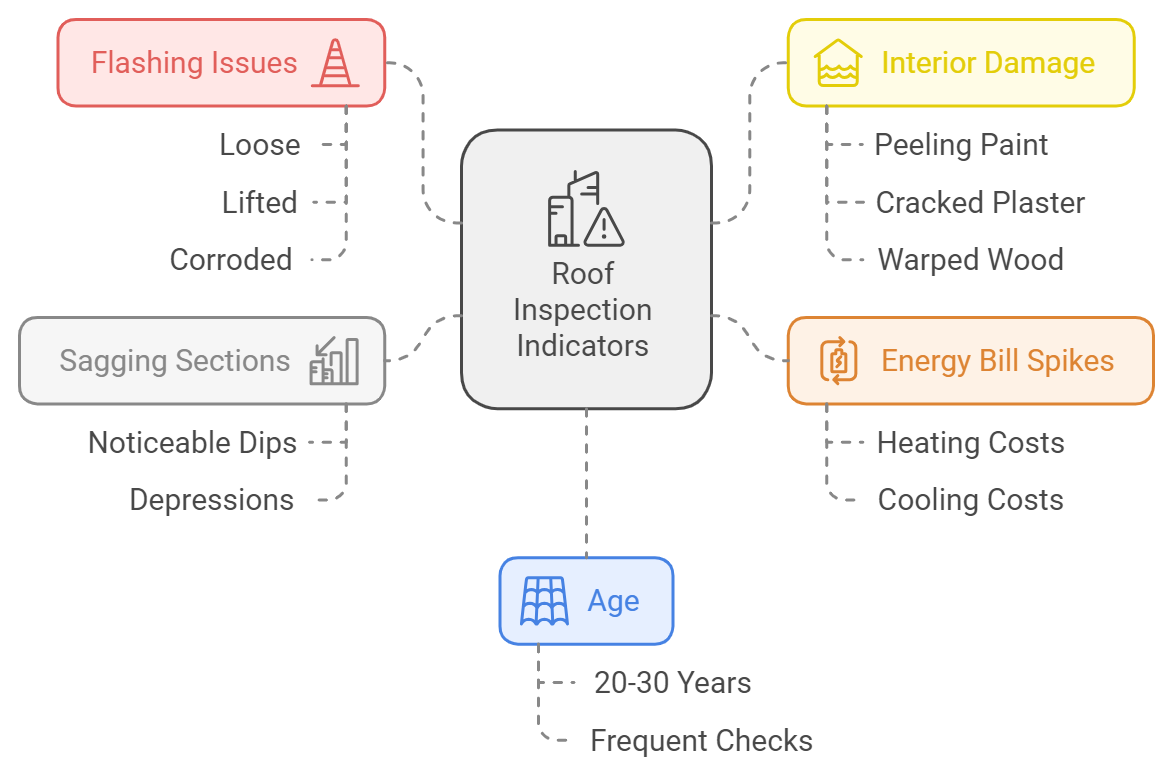
Don’t ignore signs like granule loss from shingles or dark streaks from algae. These can weaken your roof over time. Fixing problems quickly can prevent bigger damage and make your roof last longer.
Assessing the Extent of Roof Damage
A thorough roof inspection is key for accurate damage assessment. Knowing how to spot issues helps you decide if you need a professional roofing inspection. Let’s explore key aspects of evaluating your mobile home’s roof condition.
Visual Inspection Techniques
Start your roof inspection from the ground. Look for obvious signs like missing shingles or sagging areas. Use binoculars for a closer view. Inside, check for water stains on ceilings. These indicate potential leaks. Safety first – don’t climb on the roof without proper equipment and experience.
Common Problem Areas
Focus on these spots during your damage assessment:
- Seams and joints
- Around vents and chimneys
- Edges and corners
- Areas with pooling water
These places often show damage first. Look for cracks, holes, or loose materials. On flat roofs, check for blisters or bubbles in the roofing material.
When to Consider Professional Assessment
Sometimes, a professional roofing inspection is necessary. Consider calling an expert if you notice:
| Sign | Possible Issue |
|---|---|
| Multiple leaks | Widespread damage |
| Sagging roof deck | Structural problems |
| Large areas of missing shingles | Storm damage |
| Granules in gutters | Aging roof |
Professional inspectors have tools and skills to spot hidden issues. They can provide a detailed report on your roof’s condition and recommend repair or replacement options.
Mobile Home Roofing Materials
Choosing the right roofing for your mobile home is key for lasting protection. We’ll look at popular choices that offer durability, affordability, and easy installation.
Metal Roofing Options
Metal roofs are known for their long life and energy savings. They can last up to 50 years with the right care. Aluminum roofs are great for mobile homes, fighting off harsh weather well. Though they cost more upfront, their long life makes them a wise choice.
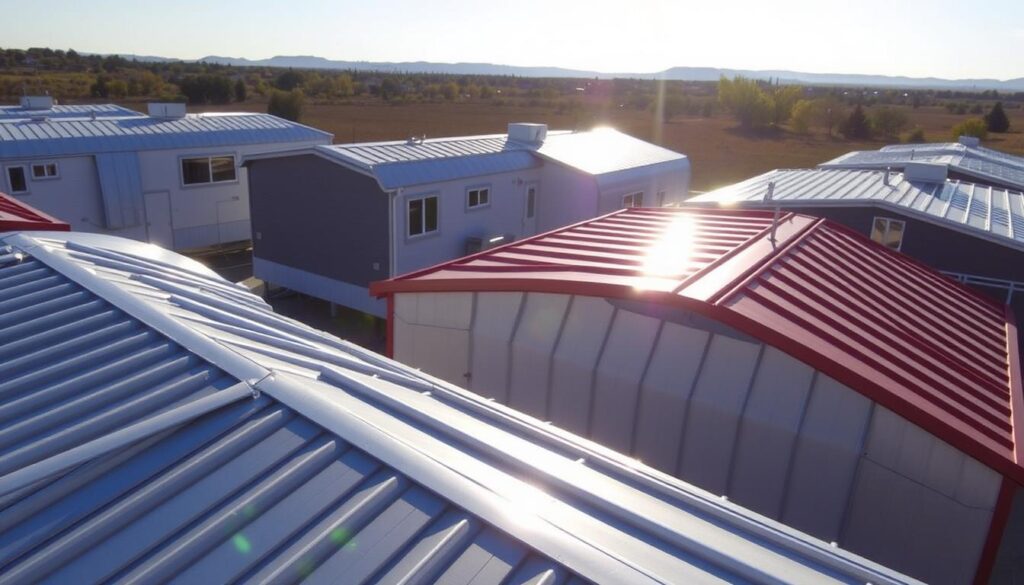
Asphalt Shingles
Asphalt shingles are a favorite for mobile homes. They’re affordable and simple to put on, lasting 15 to 30 years. Fiberglass shingles add fire safety and come in many styles and colors. For smaller roofs, asphalt shingles save money.
Rubber Membranes
Rubber roofing, like EPDM, is perfect for flat or low-sloped roofs. It lasts 15 to 25 years and fights UV rays well. TPO membranes are another rubber choice, known for lasting long and resisting weather. These materials make a tight, waterproof seal and can also save on energy.
| Roofing Material | Lifespan (Years) | Best For |
|---|---|---|
| Metal Roofs | 40-60 | Durability, Energy Efficiency |
| Asphalt Shingles | 15-30 | Affordability, Easy Installation |
| Rubber Membranes | 15-25 | Flat Roofs, Weather Resistance |
When picking roofing for your mobile home, think about your climate, budget, and future needs. Each choice has its benefits, from metal’s lasting quality to asphalt’s affordability and rubber’s flexibility.
Preparing for DIY Roof Repair
Starting a DIY roof repair needs careful planning. First, collect the right tools and materials for your mobile home’s roof. Clean the roof well, removing dirt and checking for hidden damage.
Keeping safe is key when preparing your roof. Wear non-slip shoes and use a strong ladder. For steep roofs, a safety harness is wise. Taking safety steps helps avoid accidents and makes repairs easier.
Before fixing, figure out how bad the damage is. A 1963 Biltmore mobile home, bought in 2006, might have many layers of old repairs. Look for problems like small gutters or missing support above the rafters.
- Check for dry rot from old leaks
- Look at the roof’s slope and structure
- See if more support is needed
Pick the right materials for your roof. For flat or curved roofs, like those in older mobile homes, EPDM rubber or TPO membrane works well. They’re easy to install and save money. For steep roofs, asphalt shingles or metal panels might be better.
Getting your roof ready right is vital for a good DIY fix. If you’re not sure about anything, get help from a pro. Your safety and home’s safety depend on it.
Step-by-Step Guide to Repairing a Mobile Home Roof
Fixing your mobile home roof is easier than you think. With the right steps, you can do it yourself. Let’s look at the roof repair steps one by one.
Cleaning and Preparing the Surface
Begin by cleaning your roof well. Get rid of leaves, dirt, and debris. A power washer can help with tough spots. A clean roof is key for fixing it right and finding problems.
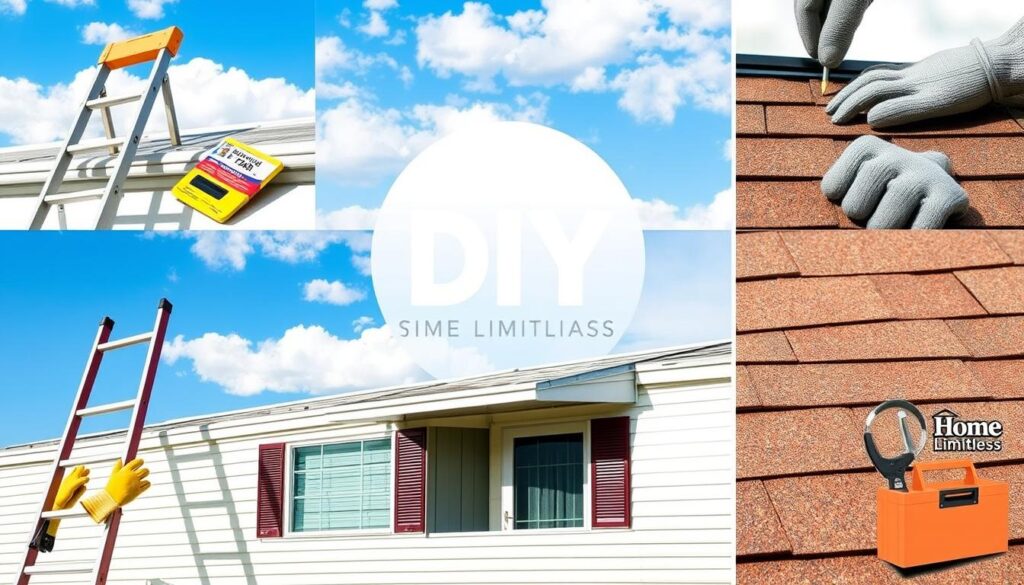
Sealing Leaks and Cracks
Look for leaks and cracks on your roof. Check vents and chimneys, as they often leak. Use neoprene caulking to seal leaks. Make sure to remove old sealant first. This step stops water damage.
Applying Protective Coatings
After sealing, add protective coatings to your roof. Metal roofs need a reflective coating to prevent rust and save energy. Liquid rubber is great for covering without seams. These coatings make your roof last longer and work better.
- Clean the roof surface thoroughly
- Identify and seal leaks and cracks
- Apply protective coatings as needed
- Follow manufacturer instructions for all products
Remember, keeping your roof in good shape is important. Regular checks and quick fixes can stop big problems. Follow these steps for a strong, leak-free roof.
Roof Replacement Options for Mobile Homes
When it’s time for a new roof on your mobile home, you have choices. You can go for a roof-over or a full new roof. This depends on your budget, the roof’s current state, and what you need long-term.
Roof-over solutions are great because they save money. You can choose from seamless rubber roofs, membrane roofs like EPDM, PVC, or TPO, and corrugated metal roofs. For pitched roofs, you can pick traditional shingles or metal panels. Each has its own advantages:
- Metal roofs last 40-60 years and can be put on in 1-2 days
- TPO roofs are tough, save energy, and are priced well
- Asphalt shingles are cheap and last 15-30 years
The cost of a new roof depends on the material and your home’s size. For a single-wide mobile home, prices are between $1,500 and $19,200. A double-wide can cost $3,000 to $32,000. Proper anchoring is key for any new roof to keep your home safe and stable.
When picking a roof, think about how long it lasts, the cost, and how it looks. In areas with harsh weather, metal or TPO roofs are better. If you want to save money, shingle roofs might be the way to go. A new roof can really improve your mobile home’s look and function.
Cost Considerations for Mobile Home Roof Repair and Replacement
Understanding roofing costs is key when planning to fix or replace your mobile home roof. We’ll look at the main factors that affect costs and how you can save.
Material Costs
Roofing material prices vary a lot. Asphalt shingles are affordable, at about $3.50 per square foot installed. Metal roofing starts at $5.50 per square foot for painted steel. TPO membrane roofs cost between $4.50 and $14 per square foot, including installation.
Labor Costs vs. DIY Savings
Labor costs change based on where you are and the contractor’s skill. A full roof replacement on a double-wide home costs $4,000 to $7,000 on average. Doing it yourself can save on labor but might not be done right. Professional inspections cost $100 to $600 and help decide if you need repairs or a new roof.
Long-Term Cost Benefits
Choosing quality materials and professional installation saves money in the long run. Metal roofs, though more expensive at first, last at least 20 years. Upgraded architectural shingles cost 50% more than basic ones but last twice as long and handle wind better.
| Roofing Type | Cost per sq ft | Lifespan | Energy Efficiency |
|---|---|---|---|
| Asphalt Shingles | $3.50 | 15-20 years | Moderate |
| Metal Roofing | $5.50-$10 | 20+ years | High |
| TPO Membrane | $4.50-$14 | 20-30 years | Very High |

When planning your budget, remember to include extra costs like tear-off costs ($1-$4 per square foot for TPO) and insulation ($1.50-$3.50 per square foot). A good roof replacement improves energy efficiency, reduces noise, and extends your mobile home’s life. This offers valuable long-term savings.
Maintenance Tips to Extend Your Mobile Home Roof’s Lifespan
Keeping your mobile home’s roof in good shape is crucial. Regular maintenance can save you money and avoid big problems. Here are some key tips to help you maintain your roof.
First, make sure to inspect your roof often. Check it at least twice a year and after bad weather. Look for any damage, like loose shingles or rust on metal roofs. Fixing small issues early can save you from expensive repairs later.
Cleaning your roof is also important. Remove leaves and branches to prevent water damage. For metal roofs, recoating every few years can extend its life.
- Keep gutters clean to avoid water damage
- Trim overhanging branches to prevent storm damage
- Check for rust on metal panels and treat promptly
- Schedule professional inspections annually
Remember, different roofs last for different times. Shingles can last 25 to 50 years, and metal roofs can last up to 50 years with the right care. Taking care of your roof now can save you money and make it last longer in the future.
Conclusion
Keeping your mobile home’s roof in good shape is key. DIY fixes can cut costs, but sometimes, you need a pro. Whether to repair or replace depends on the damage, cost, and future benefits.
Choosing the right roof material is vital. Metal roofs can last up to 70 years, while asphalt shingles last about 30. TPO membranes reflect up to 87% of UV rays, great for warm areas. Replacing a double-wide roof costs between $4,000 and $7,000, depending on materials and work.
When thinking about a new roof, consider energy savings, warranties, and how it affects the environment. Don’t forget about gutter installation to prevent water damage. Regular checks and upkeep can make your roof last longer, saving you money and keeping your home safe and cozy.

